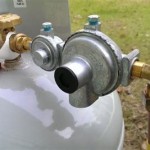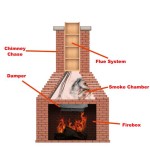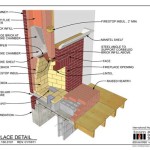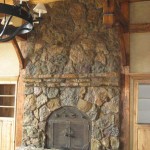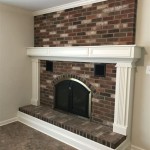Most Cost-Effective Fireplace Inserts: Balancing Performance and Budget
Fireplace inserts are designed to improve the efficiency and aesthetics of existing fireplaces. Instead of allowing heat to escape up the chimney, inserts capture and radiate warmth into the room, making them a practical choice for homeowners seeking to reduce heating costs and enhance the ambiance of their living spaces. Choosing the most cost-effective option involves careful consideration of initial investment, long-term operating expenses, and heating performance. This article will explore the factors that contribute to the cost-effectiveness of different fireplace insert models, focusing on key features and considerations for informed decision-making.
The initial cost of a fireplace insert can vary significantly depending on the fuel type (wood, gas, or electric), efficiency rating, size, features, and brand. Higher-efficiency models often come with a greater upfront investment, but they may offer substantial savings on fuel costs over time. Similarly, inserts with advanced features such as programmable thermostats or remote controls might have a higher price tag, but they can enhance convenience and control over the heating process. Therefore, it’s essential to assess individual heating needs and budget constraints to determine the optimal balance between initial cost and long-term value.
Understanding Fuel Types and Their Cost Implications
The choice of fuel type is a primary consideration when selecting a fireplace insert. Wood, gas, and electric inserts each have distinct advantages and disadvantages in terms of cost, efficiency, and environmental impact. Understanding these differences is crucial for making a cost-effective decision.
Wood Inserts: Wood-burning inserts are generally perceived as a more traditional and aesthetically pleasing option. The cost of wood varies geographically and depends on whether it's purchased or sourced directly. While wood can be a relatively inexpensive fuel source, considerable labor is involved in cutting, splitting, and storing wood. Furthermore, wood inserts typically require more frequent maintenance, including chimney cleaning and ash removal. The installation costs can also be higher due to the need for a proper chimney liner to ensure safe and efficient venting.
The efficiency of wood inserts is measured by their heating efficiency and the amount of heat they retain. Modern, EPA-certified wood inserts are designed to burn cleaner and produce fewer emissions compared to older models. These inserts often feature airtight construction and advanced combustion systems, which improve their efficiency and reduce the amount of wood required to heat the same space. When evaluating wood inserts, it's important to consider the BTU (British Thermal Unit) output and the heating capacity to ensure it matches the room size.
Gas Inserts: Gas fireplace inserts offer convenience and ease of use. They can be easily started and stopped, and many models come with features like remote controls and programmable thermostats. The cost of natural gas or propane varies depending on location and supplier. While gas may be more expensive than wood in some areas, the convenience and ease of use often offset the higher fuel cost. Gas inserts also require less maintenance compared to wood inserts, and they typically don't produce ash or creosote buildup in the chimney. The initial installation cost of a gas insert can be higher due to the need for gas line connections and venting modifications.
The efficiency of gas inserts is rated by their Annual Fuel Utilization Efficiency (AFUE). A higher AFUE rating indicates a more efficient insert, which translates to lower fuel costs. Gas inserts are available in both vented and vent-free models. Vented inserts require a chimney or vent to exhaust combustion gases, while vent-free models use room air for combustion and vent directly into the room. Vent-free inserts are generally more efficient, but they may not be suitable for all homes due to concerns about indoor air quality.
Electric Inserts: Electric fireplace inserts are the simplest and most convenient option to install. They require no venting or fuel lines, and they can be plugged into a standard electrical outlet. Electric inserts are generally less expensive to purchase than wood or gas inserts, and they require minimal maintenance. However, the cost of electricity can be higher than wood or gas, especially in areas with high electricity rates. The heating efficiency of electric inserts is typically lower than gas or wood inserts, and they may not be adequate for heating large spaces.
Electric inserts use heating coils or infrared technology to generate heat. They often feature realistic flame effects that mimic the appearance of a real fire. Electric inserts are a good option for homeowners who want the ambiance of a fireplace without the hassle of wood or gas. They are also a suitable choice for apartments or condos where venting options are limited.
Evaluating Heating Efficiency and BTU Output
Heating efficiency and BTU output are critical factors in determining the cost-effectiveness of a fireplace insert. A more efficient insert will produce more heat from the same amount of fuel, which translates to lower heating costs and reduced energy consumption. BTU output indicates the amount of heat the insert can generate per hour. Matching the BTU output to the room size is essential for achieving optimal heating performance.
For wood inserts, the EPA-certified efficiency rating indicates the percentage of heat that is transferred to the room rather than lost up the chimney. An EPA-certified insert will burn cleaner and more efficiently than a non-certified model. When selecting a wood insert, it's also important to consider the firebox size and the type of wood that can be burned. Hardwoods like oak and maple produce more heat than softwoods like pine. It’s best to use seasoned wood that has been dried for at least six months to ensure efficient combustion.
For gas inserts, the AFUE rating is a key indicator of heating efficiency. An AFUE rating of 80% or higher is considered highly efficient. Gas inserts with modulating burners can adjust the flame height and heat output to maintain a consistent temperature in the room. This feature can further improve efficiency and reduce fuel consumption. When choosing a gas insert, consider the type of venting required and the availability of natural gas or propane in the area.
For electric inserts, the wattage indicates the amount of electricity consumed. A higher wattage typically means more heat output, but it also translates to higher electricity costs. Electric inserts with adjustable thermostats and timers can help to reduce energy consumption by allowing homeowners to control the heating output and set schedules. Consider the heating capacity and the room size when selecting an electric insert to ensure it can adequately heat the space without consuming excessive electricity.
Considering Installation Costs and Maintenance Requirements
Installation costs and maintenance requirements can significantly impact the overall cost-effectiveness of a fireplace insert. Installation costs vary depending on the fuel type, complexity of the installation, and local labor rates. Maintenance requirements include regular cleaning, chimney inspections, and component replacements. Evaluating these factors upfront will help to avoid unexpected expenses and ensure the long-term performance of the insert.
Wood inserts typically have the highest installation costs due to the need for chimney liners and modifications. A professional installer should ensure that the chimney is properly sized and lined to prevent creosote buildup and ensure safe venting. Regular chimney inspections and cleaning are also essential to prevent chimney fires. Wood inserts require periodic ash removal and maintenance of the firebox components. Factors like the cost of a proper hearth, chimney liner, and professional installation should be considered.
Gas inserts require gas line connections and venting modifications. A licensed plumber or gas fitter should perform the installation to ensure compliance with local codes and regulations. Gas inserts require minimal maintenance, but periodic inspections of the gas lines and venting system are recommended. The cost of professional installation, gas line extension (if necessary), and any required permits should be included in the overall cost assessment. While generally lower than wood insert installation, specialized venting requirements can increase the cost.
Electric inserts have the lowest installation costs since they simply plug into a standard electrical outlet. However, it's important to ensure that the electrical circuit can handle the wattage of the insert. Electric inserts require minimal maintenance, but periodic cleaning of the heating elements and flame display is recommended. Although installation is simple, ensure the electrical circuit can handle the load and consider the long-term electrical consumption costs. There are usually no venting or structural modification costs with electric inserts.
In summary, determining the most cost-effective fireplace insert requires a comprehensive analysis of fuel type, heating efficiency, installation costs, and maintenance requirements. Careful consideration of these factors will enable homeowners to make informed decisions that align with their budget and heating needs.

9 Best Electric Fireplace Inserts Of 2024 Tested And Reviewed

Fireplace Inserts 5 Money Saving Benefits Efficient Heating

Gas Fireplace Insert Cost Forbes Home

Best Fireplace Inserts Of February 2024 Forbes Home

9 Best Electric Fireplace Inserts Of 2024 Tested And Reviewed

Best Wood Fireplace Inserts Fireplaces Direct Learning Center

Best Gas Fireplace Inserts For Homeowners In 2024

Wood Burning Fireplace Inserts Insert Installation

Estimated Page Fireplaces Stoves Inserts Wood Gas Pellet

Conquer Winter With A New Wood Insert Albany Ny Northeastern
Related Posts

